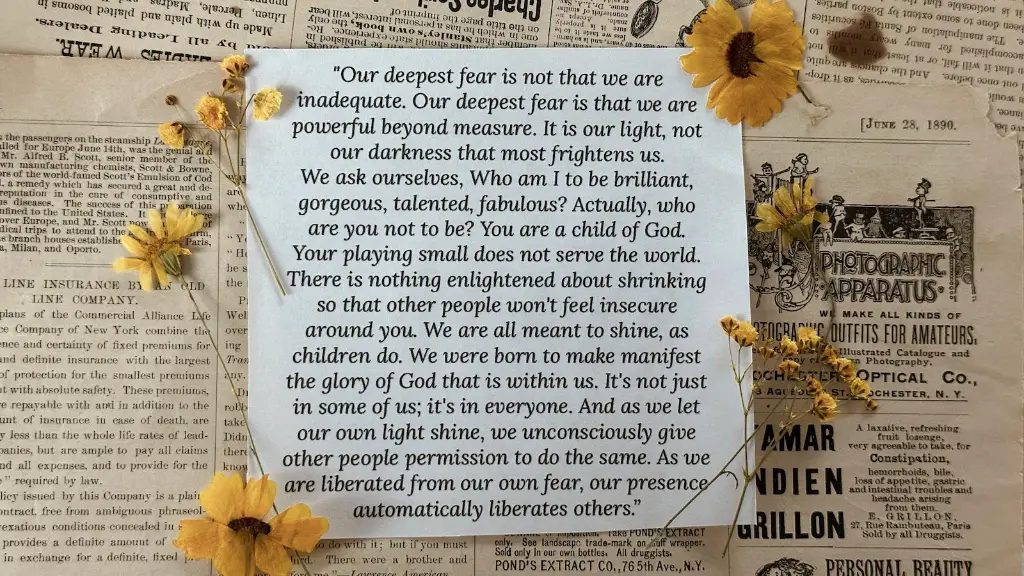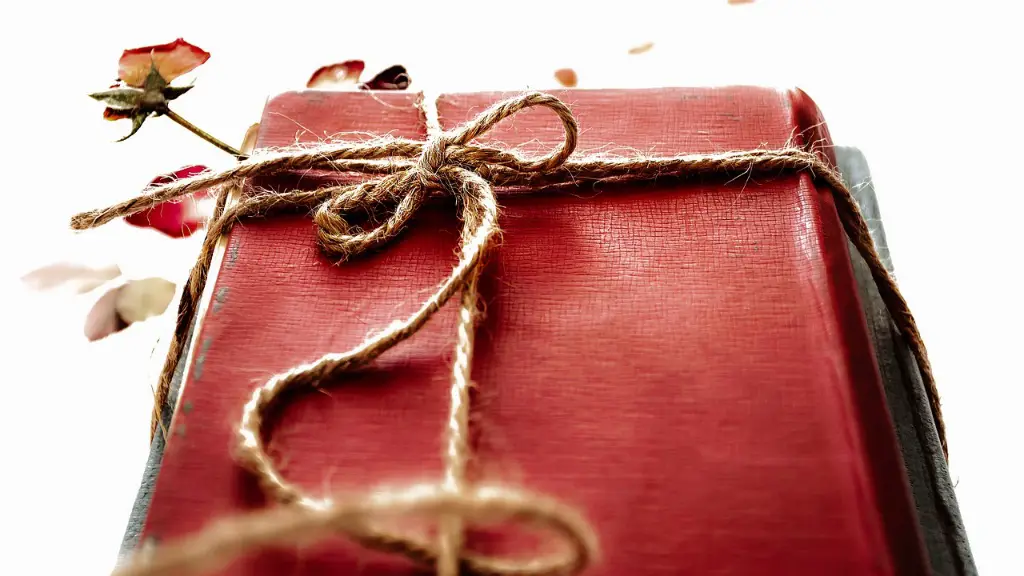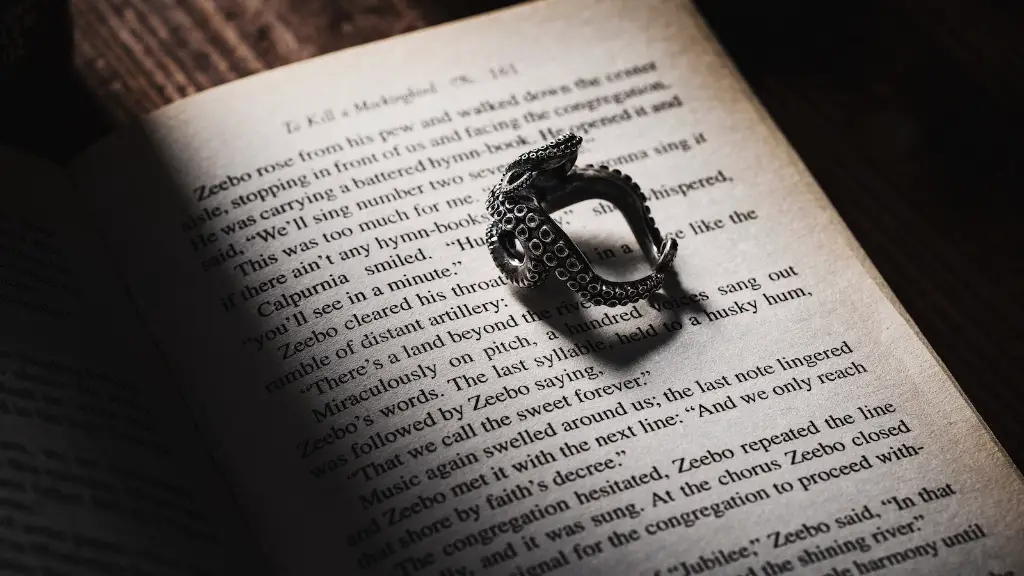Analyzing a poem can be a complex undertaking, as it can involve analyzing any number of elements in its structure, including its form, figures of speech, diction, and its overall meaning. Once these complex layers of analysis have been done, the result should be a complete analysis of the poem. The conclusion of this analysis is potentially the most important part, as it should sum up all of the insights, observations, and analyses into a unified argument that captures the main point of the poem.
Explaining the Purpose of the Conclusion
The purpose of the conclusion to a poetry analysis is to wrap up the argument by giving the reader a sense of closure and by highlighting the main points that were discussed throughout the analysis. The conclusion should center on the overarching argument and source of meaning for the poem as a whole. It needs to briefly touch on all of the main points that were discussed and explain why these points are essential to understanding the poem. This should be done in a concise and concisely-crafted manner, as the conclusion should not repeat itself, but rather it should tie together all of the points that were discussed.
Including Examples and Facts
In addition to tying together all of the points, the conclusion should also include facts and/or examples that further strengthen the argument. These examples should be chosen carefully, as they need to both be accurate and to support the argument of the poem. Additionally, they should be chosen in such a way that they are relevant to the overall theme and feeling of the poem. Adding references to other scholarly sources can also be a good way to bolster the argument, as it shows that the analysis is rooted in sound evidence and scholarly research.
Emotional Impression
The conclusion should also be crafted in a way that leaves the reader with an emotional impression of the poem. This can be done by paying attention to the emotional and distinctively poetic elements of the poem, such as imagery and metaphor. A conclusion should not be a dry collection of facts, but rather an emotional and impressionistic analysis reflecting the feelings that the poem conveys.
Avoiding Common Pitfalls
When crafting a conclusion for a poetry analysis, a few common pitfalls should be avoided. The conclusion should not be entirely new insights and interpretations, but rather a summary of the main points that have already been discussed. Additionally, the conclusion should not focus too much on any single point, as this could result in a conclusion that is too long-winded and repetitive.
Check for Accuracy
Before submitting the conclusion for a poem analysis, it is important to double-check it for accuracy and to ensure that all of the main points are summarized correctly and that the writer’s opinion is conveyed accurately. Additionally, readers should also check to make sure that the conclusion contains any necessary citations and that any assertions that were made in the analysis are backed up with appropriate references.
Stages of Poetry Analysis
Poetry analysis can be divided into five distinct stages, each of which has its own objectives which should be addressed in the conclusion. These stages include identification, configuration, interpretation, evaluation, and application. During the identification stage the reader should focus on identifying the poem’s title, author, theme, and overall structure. During the configuration stage, the reader should focus on understanding the poem’s language, diction, and imagery. During the interpretation stage, readers should focus on understanding the poem’s overall meaning and what its message conveys. During the evaluation stage, readers should consider the poem’s effectiveness and its contribution to poetry in general. Finally, during the application stage, readers should consider how the poem can be applied to the real world.
The Role of Context in Poetry Analysis
In addition to the five distinct stages of poetry analysis, the context of the poem should also be considered when crafting a conclusion. The conclusion should discuss how the poem relates to the wider context of literature, culture, and society in general. It should discuss how the poem reflects the themes of its era, as well as any relevance that it may have for contemporary society. Additionally, the conclusion should consider the poet’s intentions, as well as the effect that the poem has had on readers throughout the years.
Conclusion in a Poetry Analysis is Essential
To conclude, the conclusion of a poetry analysis is essential in summarizing and weaving together the various elements that make up the poem. It should concisely touch on all the main points, providing examples that bolster the overall argument. Additionally, it should be crafted in a way that leaves the reader with an emotional impression of the poem. Lastly, it should consider the poem’s context and its connection to literature, culture, and society. The conclusion should be carefully crafted and should be double-checked for accuracy before submitting it.
Understanding the Meter and Rhyme
Understanding the meter and rhyme of a poem is essential for an effective analysis. Meter is the rhythmic structure of the poem, its cadence, pace and rhythm, that helps conjure up its ebb and flow. Along with meter, rhyme is a literary device used to create a musical effect. Knowing the intricacies of both of these poetic elements will not only provide a deeper understanding of the poem, but will also be vital to providing a perceptive and cogent analysis.
Analyzing the Imagery
Imagery is the power to evoke pictures or mental images in the mind of the reader by evoking visual, auditory, olfactory, tactile, and gustatory sensations. Imagery is an important literary device and its nuances must be explored analytically in order to do justice to a poem. Analyzing the use of imagery will provide insights into how the poet crafts his meaning and how the reader can interpret and discuss the poem.
Interpreting the Poem’s Meaning
Interpreting a poem’s meaning is the most important part of a poetry analysis. An effective interpretation should not only demonstrate the poem’s main message, but also explore how the poem conveys this message by exploring the nuances of its form, language, and imagery. Additionally, keeping in mind the cultural and historical context of the poem will aid in forming a deeper appreciation for it.
Applying Poetry Analysis to Real Life
Finally, an in-depth poetry analysis should consider how the poem’s message could be applied to real life situations. Looking at the poem from this perspective can not only provide a richer and more meaningful understanding, but can also give insights into how to apply literature’s lessons to our own lives. This type of analysis is not only beneficial for the student, but is also a vital way in which to appreciate the poet’s craftsmanship and to deepen one’s own understanding of how literature can shape our lives.



